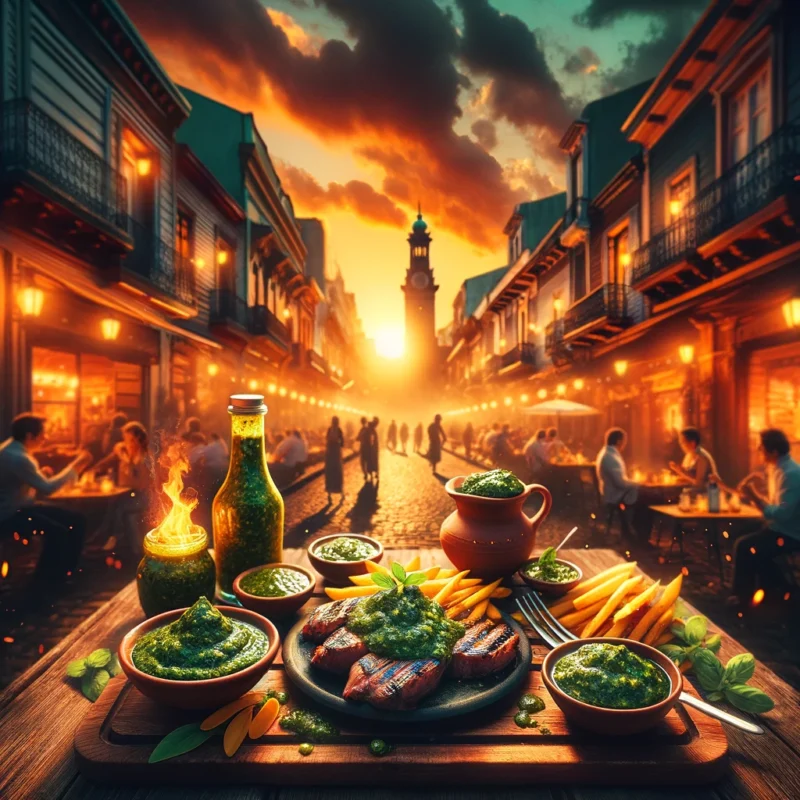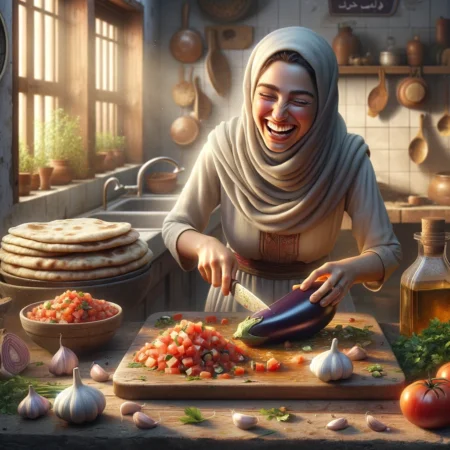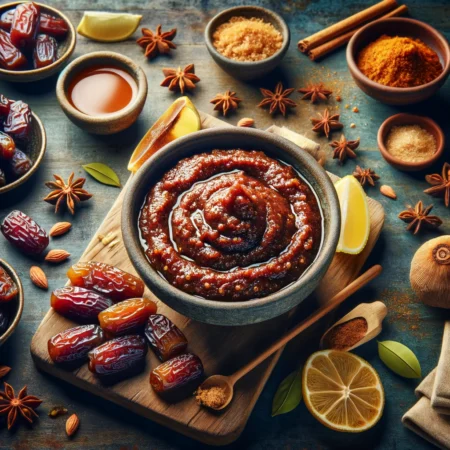There’s a kind of allure to Argentina that’s hard to put into words. Maybe it’s the tango, that passionate dance that seems to encapsulate the essence of the country, or perhaps it’s the vast grassy plains of the Pampas. But for me, it was always about the food. Argentina, with its culinary treasures, is a meat lover’s paradise. And in the heart of this carnivore country, there’s a condiment that’s become almost as emblematic as the tango itself: chimichurri.
Walking the bustling streets of Buenos Aires, you’d be forgiven for thinking chimichurri was a birthright. You’d see it drizzled over tenderly grilled meats at every parilla, its bright color contrasting beautifully with the seared steaks. But the history of chimichurri, like many great recipes, is riddled with myths, tales, and a generous pinch of speculation.
Legend has it that the name chimichurri originated from “Jimmy McCurry”, an Englishman who supposedly fought alongside South American troops in the 19th century. The locals loved the flavors he introduced but had trouble pronouncing his name. Over time, “Jimmy McCurry” became “chimichurri”. While it’s a tale I’d love to believe, historical records put a damper on this anecdote, pointing to the lack of evidence of such a man’s existence in those battles.
However, another story takes us back to the early indigenous people of Argentina, the Mapuches. They made a sauce called “chimi churin”, blending chili peppers, garlic, and herbs. It’s plausible that Spanish settlers, upon their arrival, adapted the recipe with ingredients more familiar to them, laying the foundation for today’s chimichurri.
Regardless of its origin, by the time I first encountered chimichurri, it had firmly entrenched itself in the Argentine culture. A visit to a family ranch outside of Mendoza opened my eyes to the real depth of this sauce.
The evening began with the father, Roberto, stoking the fire for an asado, the revered Argentine BBQ. As the flames flickered and the sun set, casting a warm orange glow over the vineyards, Roberto’s wife, Maria, beckoned me into the kitchen.
Laid out on the counter were the ingredients for chimichurri: vibrant green parsley, oregano, chili flakes, garlic, and vinegar. She explained that every household in Argentina had its own chimichurri blend, passed down through generations. The magic wasn’t just in the ingredients but in the way they were blended together, each family preserving its own balance of flavors.
As we chopped and mixed, Maria regaled me with tales of her grandmother, who believed in the healing properties of chimichurri. “She’d say this blend could cure ailments, lift spirits, and even mend broken hearts,” Maria chuckled. Watching her, I could see the memories, the history, the love, all blending into this simple yet profound mixture.
The meats, now sizzling and dripping with juices, were ready. We all sat down, the starlit sky our canopy. And as I took that first bite, generously slathered with chimichurri, it was a revelation. The sauce was zesty, herbaceous, spicy, and tangy, all at once, enhancing the flavor of the meat. It was a taste of Argentina’s soul, an ode to its history, its struggles, and its joys.
Leaving the ranch the next day, Maria handed me a jar of her family’s chimichurri spice blend. It wasn’t just a jar of spices; it was a jar of stories, traditions, and memories.
Today, as the world becomes increasingly globalized, chimichurri has found its way into kitchens far and wide, from New York to Tokyo. But, like the tango, its soul will always belong to Argentina. It’s a testament to how food, like music and dance, can transcend boundaries, uniting us in shared experiences and passions.
In Argentina, chimichurri isn’t just a condiment; it’s a heritage, an identity, a dance of flavors that tells tales of yore. And as with any good story, every time it’s told, a new layer is added, making it even richer than before.
Pumpkin Pancakes with Apple Compote and Candied Nuts
Ingredients
- 1 cup raw shelled nuts
- 1/4 cup light brown sugar
- 2 tablespoons unsalted butter
- 2 teaspoons rosemary
- 1 teaspoon flake sea salt
- 1/2 teaspoon chili flakes
Directions
- Line a baking sheet with parchment paper and set it aside.
- Melt the butter over medium-high heat in a large frying pan. Add the brown sugar and stir to combine.
- Continue cooking until the sugar melts, about 3 to 5 minutes, stirring every minute.
- Add the nuts and cook until they are toasted and very fragrant, about 8 minutes, stirring every minute.
- If the pan begins smoking, remove it from the heat and stir it until it stops smoking, then place it back over the heat and continue stirring every minute until the nuts are sufficiently toasted.
- Empty the pan contents onto the parchment paper-lined baking sheet and spread the nuts mixture out evenly using a spatula. Immediately sprinkle with the rosemary, salt, and chili. Allow cooling to room temperature.
- Once cooled, break apart any large chunks of nuts into individual nuts and serve.
Tips & Tricks: And the whipped cream rounded out all the flavors and just added a nice and fluffy element to the dish. YUM. I got all my ingredients at New Seasons Market, which is a store local to the Pacific Northwest area that sells a huge array of delicious seasonal fresh produce and all-natural ingredients. You can see if there’s a store near you using their find-a-store locator here.





